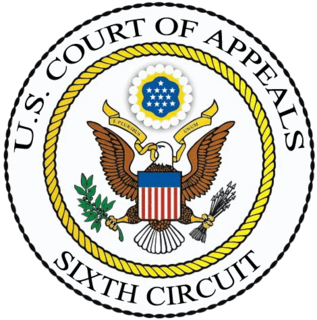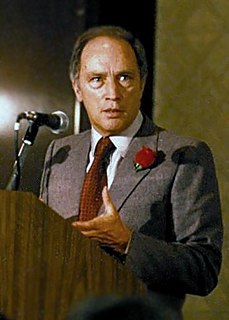Patent infringement is the commission of a prohibited act with respect to a patented invention without permission from the patent holder. Permission may typically be granted in the form of a license. The definition of patent infringement may vary by jurisdiction, but it typically includes using or selling the patented invention. In many countries, a use is required to be commercial to constitute patent infringement.
Graver Tank & Manufacturing Co. v. Linde Air Products Co., 339 U.S. 605 (1950), was an important United States Supreme Court decision in the area of patent law, establishing the propriety of the doctrine of equivalents, and explaining how and when it was to be used.
The exhaustion doctrine, also referred to as the first sale doctrine, is a U.S. common law patent doctrine that limits the extent to which patent holders can control an individual article of a patented product after a so-called authorized sale. Under the doctrine, once an authorized sale of a patented article occurs, the patent holder's exclusive rights to control the use and sale of that article are said to be "exhausted," and the purchaser is free to use or resell that article without further restraint from patent law. However, under the repair and reconstruction doctrine, the patent owner retains the right to exclude purchasers of the articles from making the patented invention anew, unless it is specifically authorized by the patentee to do so.
Catnic Components Ltd. v. Hill & Smith Ltd. [1982] R.P.C. 183 is a leading House of Lords decision on the nature of a patent and in particular the methods of claim construction.
In the United Kingdom, a patent provides its proprietor with the right to exclude others from utilizing the invention claimed in that patent. Should a person utilize that invention, without the permission of the patent proprietor, they may infringe that patent.
Quanta Computer, Inc. v. LG Electronics, Inc., 553 U.S. 617 (2008), is a decision of the United States Supreme Court in which the Court reaffirmed the validity of the patent exhaustion doctrine, and in doing so made uncertain the continuing precedential value of a line of decisions in the Federal Circuit that had sought to limit Supreme Court exhaustion doctrine decisions to their facts and to require a so-called "rule of reason" analysis of all post-sale restrictions other than tie-ins and price fixes. In the course of restating the patent exhaustion doctrine, the Court held that the exhaustion doctrine is triggered by, among other things, an authorized sale of a component when the only reasonable and intended use of the component is to practice the patent and the component substantially embodies the patented invention by embodying its essential features. The Court also overturned, in passing, the part of decision below that held that the exhaustion doctrine was limited to product claims and did not apply to method claims.
United States v. Univis Lens Co., 316 U.S. 241 (1942), is a decision of the United States Supreme Court explaining the exhaustion doctrine and applying it to find an antitrust violation because Univis's ownership of patents did not exclude its restrictive practices from the antitrust laws. The Univis case stands for the proposition that when an article sold by a patent holder or one whom it has authorized to sell it embodies the essential features of a patented invention, the effect of the sale is to terminate any right of the patent holder under patent law to control the purchaser's further disposition or use of the article itself and of articles into which it is incorporated as a component or precursor.
United States v. General Electric Co., 272 U.S. 476 (1926), is a decision of the United States Supreme Court holding that a patentee who has granted a single license to a competitor to manufacture the patented product may lawfully fix the price at which the licensee may sell the product.
A post-sale restraint, also termed a post-sale restriction, as those terms are used in United States patent law and antitrust law, is a limitation that operates after a sale of goods to a purchaser has occurred and purports to restrain, restrict, or limit the scope of the buyer's freedom to utilize, resell, or otherwise dispose of or take action regarding the sold goods. Such restraints have also been termed "equitable servitudes on chattels".
In Canada, every patent application must include the “specification”. The patent specification has three parts: the disclosure, the claims, and the abstract. The contents of the specification are crucial in patent litigation.
A patent holder in Canada has the exclusive right, privilege and liberty to making, constructing, using and selling the invention for the term of the patent, from the time the patent is granted. Any person who does any of these acts in relation to an invention without permission of the patent owner is liable for patent infringement.
Morton Salt Co. v. G.S. Suppiger Co., 314 U.S. 488 (1942), is a patent misuse decision of the United States Supreme Court. It was the first case in which the Court expressly labeled as "misuse" the Motion Picture Patent/Carbice tie-in defense to a charge of patent infringement and created the present blanket remedy in infringement cases of unenforceability of the misused patent. The decision re-emphasized that misuse can be found without finding an antitrust violation.
Carbice Corp. v. American Patents Development Corp., 283 U.S. 27 (1931), is a decision of the United States Supreme Court extending the patent misuse doctrine against tie-ins to cases in which patents were used to tie the purchase of unpatented elements of patented combinations. The Court had previously held that it was unlawful to require the purchase of supplies as a condition of a patent license, where the supplies were not claimed as part of the patented combination.
Motion Picture Patents Co. v. Universal Film Mfg. Co., 243 U.S. 502 (1917), is United States Supreme Court decision that is notable as an early example of the patent misuse doctrine. It held that, because a patent grant is limited to the invention described in the claims of the patent, the patent law does not empower the patent owner, by notices attached to the patented article, to extend the scope of the patent monopoly by restricting the use of the patented article to materials necessary for their operation but forming no part of the patented invention, or to place downstream restrictions on the articles making them subject to conditions as to use. The decision overruled The Button-Fastener Case, and Henry v. A.B. Dick Co., which had held such restrictive notices effective and enforceable.

The Button-Fastener Case, Heaton-Peninsular Button-Fastener Co. v. Eureka Specialty Co., also known as the Peninsular Button-Fastener Case, was for a time a highly influential decision of the United States Court of Appeals for the Sixth Circuit. Many courts of appeals, and the United States Supreme Court in the A.B. Dick case adopted its "inherency doctrine"—"the argument that, since the patentee may withhold his patent altogether from public use, he must logically and necessarily be permitted to impose any conditions which he chooses upon any use which he may allow of it." In 1917, however, the Supreme Court expressly overruled the Button-Fastener Case and the A.B. Dick case, in the Motion Picture Patents case.
Leitch Manufacturing Co. v. Barber Co., 302 U.S. 458 (1938), is a 1938 decision of the United States Supreme Court extending the tie-in patent misuse doctrine to cases in which the patentee does not use an explicit tie-in license but instead relies on grants of implied licenses to only those who buy a necessary supply from it.
The Mercoid cases—Mercoid Corp. v. Mid-Continent Investment Co., 320 U.S. 661 (1944), and Mercoid Corp. v. Minneapolis-Honeywell Regulator Co., 320 U.S. 680 (1944)—are 1944 patent tie-in misuse and antitrust decisions of the United States Supreme Court. These companion cases are said to have reached the "high-water mark of the patent misuse doctrine." The Court substantially limited the contributory infringement doctrine by holding unlawful tie-ins of "non-staple" unpatented articles that were specially adapted only for use in practicing a patent, and the Court observed: "The result of this decision, together with those which have preceded it, is to limit substantially the doctrine of contributory infringement. What residuum may be left we need not stop to consider." The Court also suggested that an attempt to extend the reach of a patent beyond its claims could or would violate the antitrust laws: "The legality of any attempt to bring unpatented goods within the protection of the patent is measured by the antitrust laws, not by the patent law."
Dawson Chemical Co. v. Rohm & Haas Co., 448 U.S. 176 (1980), is a 1980 5-4 decision of the United States Supreme Court limiting the patent misuse doctrine and explaining the scope of the 1952 amendment of the patent laws that resurrected the contributory infringement doctrine in the wake of the Mercoid cases. The Mercoid cases and a few predecessor cases had denied relief against patent infringement to patentees who were deriving revenue from the sale of unpatented products used as supplies for patented combinations or as components of patented combinations, even when the unpatented products were specially adapted for use with the patented combinations and even when they lacked any utility other than that use. The patentees used contributory infringement suits or threats of such suits to enforce their business model, which the Mercoid cases outlawed.

United States v. Vehicular Parking Ltd. is a patent–antitrust case in which the United States Government eroded the doctrine of United States v. General Electric Co. permitting patentees to fix licensee prices, but failed to persuade the court to decree royalty-free licensing as a remedy.




